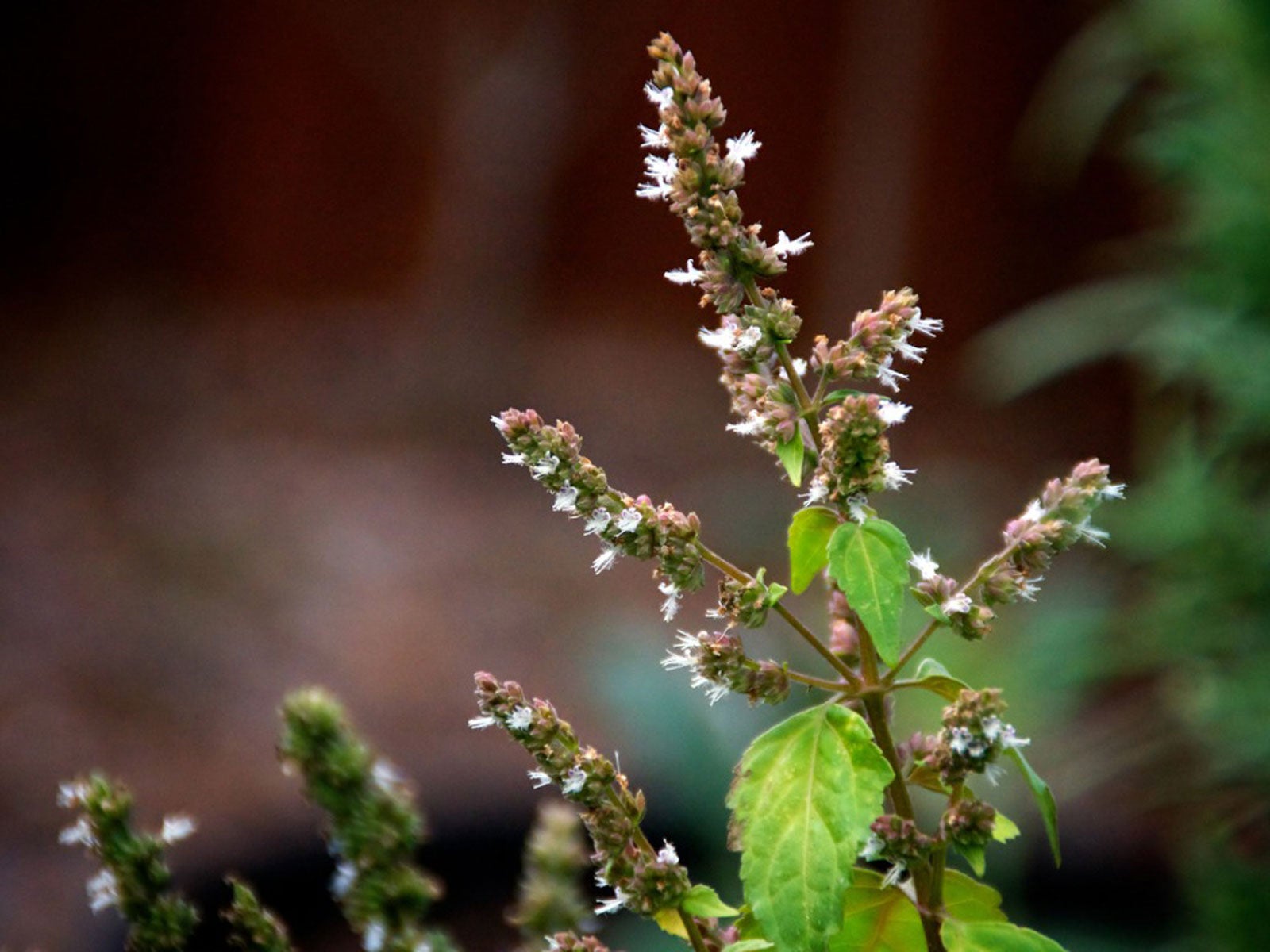Patchouli Cultivation: How To Grow A Patchouli Herb Plant

An aroma synonymous with the Hippie era, patchouli cultivation has its place amongst the ‘de rigueur' herbs of the garden such as oregano, basil, thyme and mint. As a matter of fact, patchouli plants reside in the family Lamiaceae, or mint family. Read on to learn more about patchouli uses.
Information About Patchouli Herb Plant
As you might guess due to its inclusion in the mint family, the patchouli herb plant has a fragrant scent that has singled it out for special value for centuries. The patchouli plant is native to the Malay Archipelago and West Indies. Chinese, Indian, Malaysian and Japanese cultures included patchouli cultivation among their medicinal herb garden to treat fungal and skin problems, stomach ailments and as an insecticide and antiseptic. This perennial herb has furry, green and ovate leaves born on an erect plant that grows to between 2-3 feet (0.5-1 m.). Patchouli plant blooms are white tinged with purple and arise from purplish stems.
How to Grow Patchouli Plants
Patchouli likes a warm, damp climate in fertile, well-draining soil in an area of full to partial sun exposure. This herb is conducive to container growth, or you can plant it directly into the garden. Patchouli herb plant thrives in a soil pH of between 5.5 and 6.2. Dig a hole matching the depth of the container in which the herb comes in. Place the plant in the hole and tamp the soil down around the herb to eliminate any air pockets. Give the herb 20 inches (50 cm.) of room around it to grow into and water it in thoroughly. Thereafter, allow the topsoil to dry before watering. A good layer of mulch around the patchouli herb plant is recommended to retain moisture.
Patchouli Plant Care
Fertilize the herb each spring with an NPK plant food with a ratio of 10-10-10 and thereafter once each month until the fall. Prune any leaves that are dying, diseased or otherwise damaged. Patchouli is susceptible to infection with leaf blight. Prior to pruning the plant, dip the shears in a mix of 70 percent denatured alcohol and 30 percent water to retard the spread of the disease. Caterpillars love patchouli plants as well, so be vigilant about their discovery and removal. Winter watering should be reduced to allow the plant to go into dormancy. If you grow patchouli plant in containers, they can be moved indoors for protection, especially in areas with harsh winters. First acclimate the plant by setting it in a shady area for a few days prior to bringing it inside; this will keep it from becoming shocked by the sudden temperature shift. Place the container in a south facing window where it can then receive at least six hours of sunlight.
Uses for Patchouli Plant
As previously mentioned, patchouli has been used as a treatment for many medicinal maladies. Both the leaves and roots are used depending upon the treatment. The heady essential oils are used not only for scenting the body and garments, but have been used as an antidepressant, anti-inflammatory, antiemetic, antiseptic, antimicrobial, an astringent, decongestant, deodorant, diuretic, fungicide, sedative and prophylactic. This pungent oil is said to cure or aid in acne, athlete's foot, cracked or chapped skin, dandruff, dermatitis, eczema, fungal infections, hair care, impetigo, insect repellent, oily scalp treatment, and to cure open sores and wounds and even to eliminate wrinkles! Harvest patchouli on dry mornings when the essential oils have peaked to get the most benefit from the plant. Disclaimer: The contents of this article is for educational and gardening purposes only. Before using ANY herb or plant for medicinal purposes, please consult a physician or a medical herbalist for advice.
Gardening tips, videos, info and more delivered right to your inbox!
Sign up for the Gardening Know How newsletter today and receive a free copy of our e-book "How to Grow Delicious Tomatoes".

Amy Grant has been gardening for 30 years and writing for 15. A professional chef and caterer, Amy's area of expertise is culinary gardening.
-
 Looking For Plants To Give You The Soft And Fuzzies? Try These 5 Fuzzy Leaf Plant Options
Looking For Plants To Give You The Soft And Fuzzies? Try These 5 Fuzzy Leaf Plant OptionsLovers of texture, drama, silver foliage and tactile plants will adore these special sensory garden additions. These fuzzy leaf plant options will leave you all aglow
By Susan Albert
-
 Get Ready For A Summer Of Hummers! Grow These Full Sun Hummingbird Plants and Flowers
Get Ready For A Summer Of Hummers! Grow These Full Sun Hummingbird Plants and FlowersIf you’re lucky enough to enjoy a sunny backyard, make sure you are maxing out on your pollinator opportunities and grow these full sun hummingbird plants and flowers
By Tonya Barnett